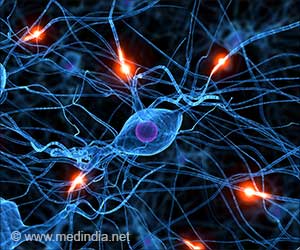A treatment for neuroblastoma that lands a one-two punch works best when the second punch is timed to take maximum advantage of the first one.
A treatment for neuroblastoma that lands a one-two punch works best when the second punch is timed to take maximum advantage of the first one, according to results of studies at St. Jude Children’s Research Hospital. Neuroblastoma is a pediatric solid tumor that arises from cells in the peripheral nervous system.
The finding holds promise for improving neuroblastoma treatment by using the drug bevacizumab to block VEGF, a protein that stimulates blood vessel growth in tumors and then following with the chemotherapy drug topotecan, which depends on blood vessels to penetrate the tumor and kill the cancer cells. A report on this work appears in the current issue of “Clinical Cancer Research.”Results of the current study are especially important because drugs such as bevacizumab are being evaluated in clinical trials for children with neuroblastoma. However, there are no standard guidelines for how much of the drug to give or when to give it.
Such guidelines would be especially helpful for developing combination therapy with both bevacizumab and chemotherapy drugs, not only for neuroblastoma, but also for other tumors.
“The results of our study are a significant step toward establishing such guidelines,” said Andrew Davidoff, M.D., director of surgical research at St. Jude, and the report’s senior author.
The St. Jude team based their strategy on previous findings that suggested blocking VEGF at first improves the tumor’s vasculature, or blood vessel system, by eliminating weak and faulty vessels, while temporarily sparing healthy, normal blood vessels.
The investigators reasoned that if they treated tumors with bevacizumab first, the temporarily improved tumor circulation would more efficiently deliver topotecan—but only if they timed this one-two punch correctly.
Advertisement
Bevacizumab eliminates the shoddy vasculature, temporarily sparing the more sturdily built vessels, which do not leak fluid, but deliver the drug throughout the tumor, Davidoff said.
Advertisement
The researchers showed that bevacizumab reduced the density of the tumor’s vasculature to less than 30 percent of that in untreated tumors within seven days, accompanied by a significant decrease in pressure in the tumor caused by fluid passing through from the blood vessels.
The remaining, normalized vasculature perfused the tumor more thoroughly than before treatment with bevacizumab; and the amount of topotecan it carried throughout the tumor was about 80 percent more when given one to three days after bevacizumab compared to when both drugs were given either at the same time or seven days apart.
When the researchers administered topotecan to the tumor-bearing mice three days after bevacizumab, the size of the tumors was only 36 percent of the size of untreated tumors, compared to 88 percent when mice were treated with bevacizumab alone; 54 percent when treated with topotecan alone; and 44 percent when tumor-bearing mice were treated with both drugs at the same time.
“We observed in the mouse model of neuroblastoma that the maximum amount of topotecan reached the tumor and had maximum tumor-reducing effect if we waited three days after administering bevacizumab,” Davidoff said.
“This suggested that combination treatment of children with neuroblastoma should take into account that there is a window of opportunity for improving topotecan delivery after treatment with bevacizumab. Further studies should tell us how long that window is open.”
Source-Eurekalert
JAY/M











